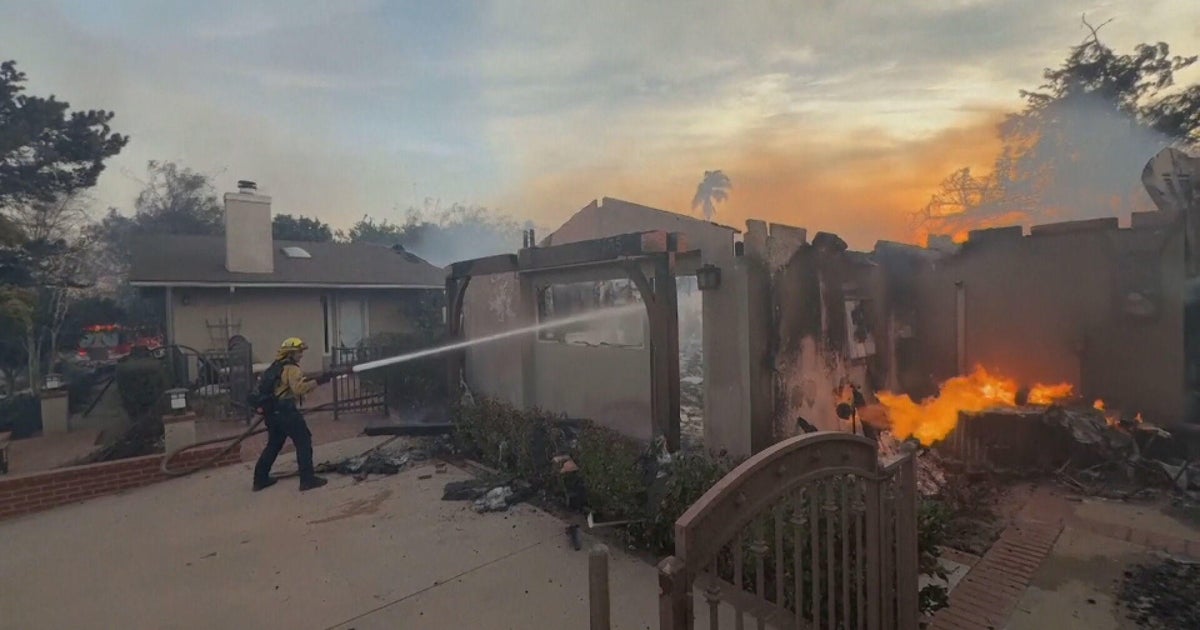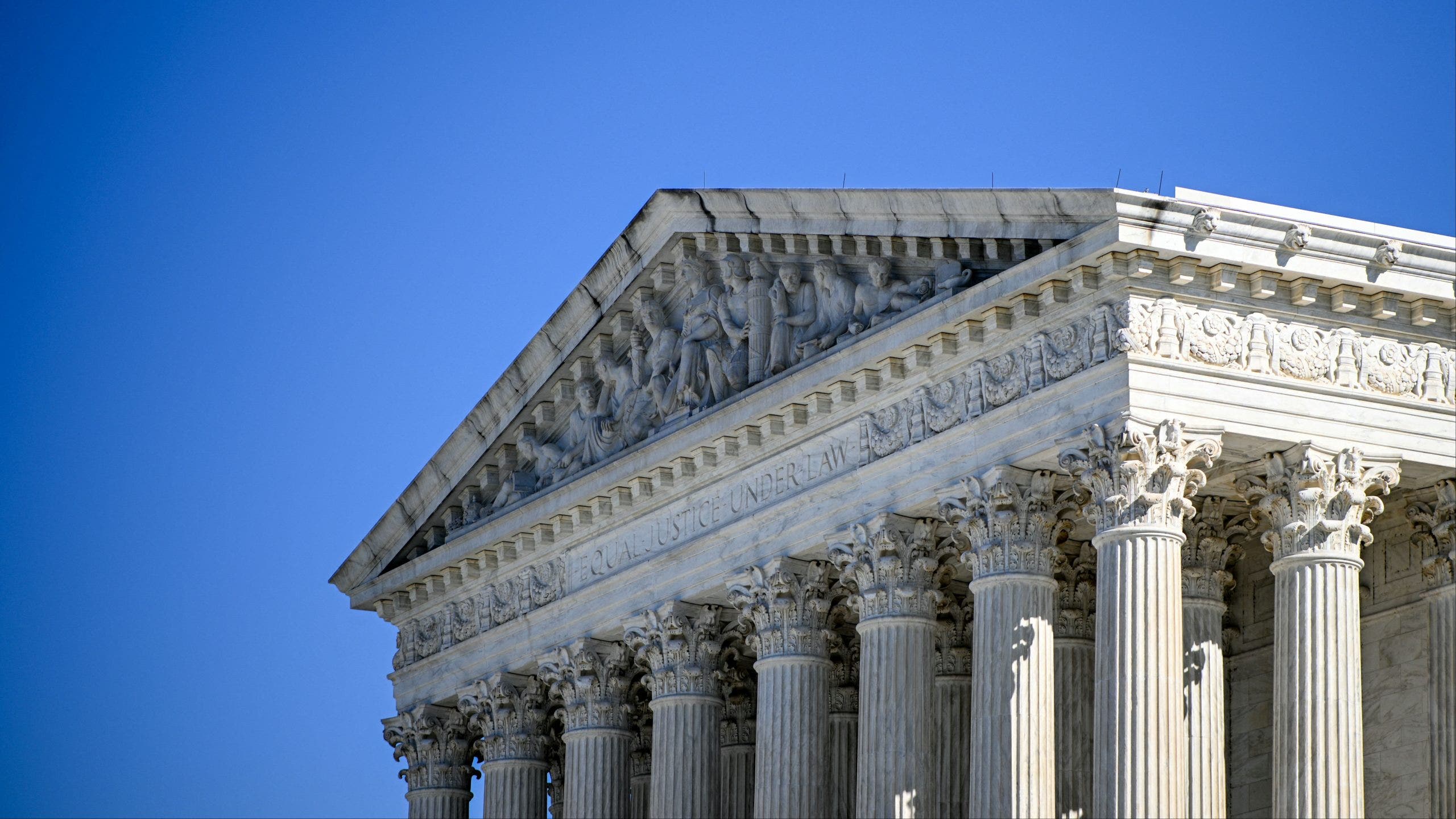California
Be ‘proactive’: California’s worsening fires are a warning to temperate world

In the last 20 years, California’s northern forests have experienced a stark increase in lands burned by fire. Now scientists have a better idea why.
The culprit is a familiar one — human-caused climate change, driven primarily by the burning of fossil fuels, according to findings published on Monday in Proceedings of the National Academy of Sciences.
But other aspects are new. The paper presents for the first time a portrait of fires in an alternate California in which human-caused climate change hadn’t happened.
And by comparing that world to our own, it offers a sobering warning for any ecosystem — notably Canada and the Western U.S. — in which temperature, not the availability of trees, is the primary factor limiting the size of fires.
Fossil fuel burning expanded vulnerable forests
In those regions, lead author Mario Turco told The Hill, the impact of a century of burning fossil fuels has vastly expanded the amount of forest vulnerable to fire.
That relationship portends a grim future, he noted. California’s coming fires could burn up to 50 percent more land than the fires of today.
Those specific prescriptions focus on the pine forests of Northern and Central California. But Turco emphasized that similar dynamics were at work in the record Canadian wildfires that clogged the air of the U.S. Northeast last week.
In Canada, the amount of land burned by fire thus far this season is now 13 times the national average — only a couple of weeks into what was traditionally considered to be the fire season.
“What is happening in Canada this month is something strange because there are not so many analogs in the past,” Turco told The Hill.
California, by contrast, offered the scientists a golden setting for a natural experiment. In addition to its long history of big blazes — in particular, the enormous fires in the summers of 2018, 2020 and 2021 — California has unusually good data around fires.
Unlike many other fire-prone areas, California’s state agencies have been collecting rigorous data on the extent of fire in the state for decades.
That data shows that the 10 largest wildfires in California history also happened in the last 20 years, with those fires getting bigger and more powerful later in that period. (Half occurred in 2020 alone, and eight since 2017.)
But while the increased scale of the problem is clear — as is the fact that it has come alongside an implacable rise in both global temperatures and the burning of fossil fuels — it has historically been difficult to untangle how much human-caused climate change, specifically, has contributed to California’s current fire problem.
Simulation shows scope of problem
To answer that question, the team simulated an alternate California that had experienced only natural climate variation since 1996.
While the scientists didn’t make this point explicitly, this experiment amounted to a rough simulation of an alternate past: one in which people rapidly stopped burning fossil fuels once their role in climate change was discovered.
Off-ramps from the current crisis into such an alternate world appear early. As NASA notes, the Swedish scientist who first predicted the relationship between rising levels of carbon dioxide — the major byproduct of burning — and rising temperatures first published in 1896.
That relationship was confirmed as early as 1938, when British engineer Guy Callendar linked the world’s use of fossil fuels to a slight — but already statistically significant — rise in temperatures; by 1956 U.S. Office of Naval Research was already promulgating “The Carbon Dioxide Theory of Climatic Change.”
But even in a world where such scientific work had led to an early, widespread and total move away from fossil fuels, climate change would not stop. The sun’s power would still fluctuate, as would the distance — thanks to an orbital wobble — between it and Earth, each of which would impact how much heat reached the surface.
And down on Earth, changes in terrestrial processes — like volcanic eruptions and the spread or contraction of forests — would also have led to broader changes in the climate.
Humans caused threefold rise in burned lands
But on that alternate Earth, natural variations in the climate wouldn’t be enough to produce the dramatic rise in burned areas that California has experienced over the past 30 years, the PNAS paper found.
In fact, the scientists wrote, our world was accelerating away from that nature-only paradigm. The historical record shows that California has had nearly twice as big an increase in burned land — 1.7 times, to be exact — between 1971 and 2021 as it would have under purely natural cycles.
And the magnitude of that difference was increasing, they wrote. Human-caused climate change has led to a “remarkable” threefold increase in burned lands between the latter half of that period — 1996 and 2021 — and the equivalent period over on nature-only Earth.
That has been a pivotal period for climate change — not only in terms of its rise as political issue, but also in the acceleration of the forces driving it. (More than half of the carbon discharged into the atmosphere since the dawn of the industrial revolution came from fires lit — in fireplaces, power plants and internal combustion engines — since 1990.)
What role does forest management play?
One major question rests outside the scope of the paper: the role of “forest management” — or mismanagement — on the fire problem.
Since the 2018 fire that leveled Paradise, Calif., state and federal officials have faced harsh criticism for their decades-long policy of suppressing low-grade wildfires that might otherwise have cleaned fuels from the forest — sowing the ground for the unstoppable fires of the present.
Conservative politicians have appealed to similar management concerns to explain away the impacts of climate change, as in Donald Trump’s 2018 claim that California faced such bad fires because — unlike the forest nation of Finland — the state didn’t “rake” its forests.
To Trump’s defense — and despite the bemusement those remarks caused on both sides of the Atlantic — the Finnish forestry sector really does use giant mechanized rakes to pull flammable tree residues out of its forests after they have been cut.
That real geographic difference, however, conceals an even more important historical one. Such tree residue — which is now burned in district-level power-plants — could once have been safely left to decompose in place, before climate change heated up the forests.
“Trump has a point,” fire ecologist Matthew Hurteau wrote in a 2018 op-ed in The Washington Post. “The U.S.could get away with poor management, until global warming.”
Reinforcing that idea, the PNAS study didn’t find any historic change in forest management that was big enough to explain the size of the jump in the amount of California that now burns, Turco said.
The one place that scientists did find such a connection was Europe — where they found that forest policy had led to a striking decrease in the amount of land burned, even as human-caused climate change pushed in the opposite direction.
That might not be entirely good news, Turco said. “It means that the tool of fire management — where basically they try to suppress all fires — is working. But that doesn’t mean it will work in the future climate.”
On the one hand, because the climate itself was heating up and drying out European forests, leading to a greater capacity for fire. On the other hand, because with each wildfire stopped too early, “we are creating more fuel to be burned in the future.”
That rising climatic pressure towards bigger wildfires makes it more important “to focus not only on suppression, but also on preparedness, proactive action, proactive management,” he added.
That’s something the Biden administration Forest Service has staked out as a priority. The agency sees the decades of forest mismanagement of forest fuels as a serious and systemic problem they are spending billions to fix.
Turco said those steps are important, even if blunting the speed of human-caused climate change is the main imperative.
“It’s quite dangerous to say ‘climate change is responsible for all the problems of the forest fires in California — so it’s not important to have a good plan,’” he added. “Because this is not true.”
Copyright 2023 Nexstar Media Inc. All rights reserved. This material may not be published, broadcast, rewritten, or redistributed.

California
California man beheaded his 1-year-old son with a knife, authorities say

SACRAMENTO, Calif. — A man has been arrested on suspicion of beheading his 1-year-old son, Northern California authorities said.
The Sacramento County Sheriff’s Office said in a statement Friday that deputies responding to an early morning family disturbance call found a woman outside a home who told deputies that her husband Andrey Demskiy, 28, assaulted her and her mother.
Deputies forced their way into the house in northern Sacramento County when they learned Demskiy was inside with the boy. As they took him into custody, they found a “severed child’s head” in the bedroom where Demskiy was detained.
Detectives said Demskiy used a knife to behead his son after his wife and mother-in-law left the house, according to the statement. He was in custody and ineligible for bail, and was scheduled to appear in court Tuesday.
The sheriff’s department and the county public defenders office did not respond to emails seeking information on whether Demskiy had an attorney who could speak on his behalf.
California
Protests Swept California Campuses Last Year. Schools Are Now Blocking Them | KQED

At UC Santa Cruz, police arrested one student who was using a megaphone during a demonstration on Oct. 7, according to an eyewitness who spoke to LookOut Santa Cruz. Santa Cruz County Sheriff’s Office public arrest reports show one person was arrested on the Santa Cruz campus for obstruction of a public officer and battery without injury that day.
While no arrests were made, Pomona College has suspended 12 students for the remainder of the 2024–25 academic year following an Oct. 7 demonstration in which they entered, damaged and vandalized a restricted building, according to the student newspaper. The college also banned dozens of students from the four other campuses of the Claremont Colleges, a consortium that includes Pomona.
Private colleges have implemented their own policy changes. Pomona College now requires students and faculty to swipe their ID cards to enter academic buildings. Since last semester, students and visitors entering USC are also required to show a school or photo ID.
Some students are still facing charges from last year’s protests
Few charges have been filed after UCLA’s encampment made headlines in April when counterprotesters led an attack on encampment protesters while law enforcement did not intervene for several hours. The following day, 254 people were arrested on charges related to the protest encampment. In October, two additional people were also arrested for participating in the counter-protester violence.
The Los Angeles County District Attorney’s office is pursuing three felony cases against individuals arrested at UCLA in relation to violence during last spring’s protests.
Meanwhile, the city attorney’s office is reviewing 93 misdemeanor cases from USC and 210 from UCLA, according to information it provided to CalMatters last month.
Lilyan Zwirzina, a junior at Cal Poly Humboldt, was among the students arrested in the early morning of April 30 following protesters occupying a campus building and ignoring orders to disperse from the university. Law enforcement took her to Humboldt County Correctional Facility, where she faced four misdemeanor charges, including resisting arrest. Zwirzina thought she’d have to cancel her study abroad semester, which conflicted with the court date she was given.
“I was pretty frustrated and kind of freaked out,” Zwirzina said. Authorities dropped the charges against her in July.
The Humboldt County District Attorney’s Office didn’t pursue charges against 27 of the 39 people arrested, citing insufficient evidence. The 12 remaining cases were referred to the Cal Poly Humboldt Police Department for investigation. Those cases remain under investigation, according to the university.
For 13 people, including students, arrested at Stanford University in June, the Santa Clara County District Attorney Jeff Rosen has not pressed charges as of Nov. 20, according to information his office provided CalMatters.
Elsewhere across the state, some district attorneys are pursuing misdemeanor and felony charges against student protesters. Orange County District Attorney Todd Spitzer is pursuing misdemeanor charges against 50 people, including two UCI professors, a teaching assistant, and 26 students, stemming from a protest at UC Irvine on Oct. 22, 2023. Charges include failure to disperse, resisting arrest and vandalism.
At Pomona College, 19 students were arrested on April 5 on charges of trespassing after some protesters entered and refused to leave an administrative building. Students arrested either had their cases dismissed or have accepted community service in lieu of further legal action. James Gutierrez, the attorney representing the arrested students, said he asked that the college drop charges against its students, citing their right to protest the use of paid tuition dollars.
“They are righteously demanding that their colleges, the ones they pay tuition to and housing fees and pour a lot of money into, that that university or college stop investing in companies that are directly supporting this genocide and indirectly supporting it,” he said.
Students fight back against campus protest policies
As administrators face the challenge of applying protest policies more uniformly and swiftly, the truer test of California public higher education institutions’ protest rules will be playing out in court.
In one already resolved case, UC leadership agreed in August to comply with a court order requiring the campus to end programs or events that exclude Jewish students. A federal judge ruled some Jewish students in support of Israel who were blocked from entering the encampment had their religious liberties violated — though some Jewish students did participate in UCLA’s protest encampment.
Now, students have filed at least two lawsuits against their campuses and the UC system for violating their rights while ending student encampments last spring. In September, ACLU NorCal filed suits against the UC and UC Santa Cruz for not providing students due process when they immediately barred arrested students from returning to campus.
“Those students should have gotten a hearing, an opportunity to defend themselves or to explain themselves, and the school would have shown evidence of why they created a risk of disturbance on campus,” Chessie Thacher, senior staff attorney at ACLU of Northern California, said.
UC Santa Cruz spokesperson Scott Hernandez-Jason said the university “appreciates the court’s careful deliberation” and that the university “is committed to upholding the right to free expression while also protecting the safety of its campus community.”
In October, ACLU SoCal filed lawsuits on behalf of two students and two faculty members against the UC and UCLA, alleging the actions the university took to break down the encampment violated their free speech rights.
UCLA spokesperson Ricardo Vazquez told CalMatters via email that the university would respond in court and that UCLA “fully supports community members expressing their First Amendment rights in ways that do not violate the law, our policies, jeopardize community safety, or disrupt the functioning of the university.”
“The encampment that arose on campus this spring became a focal point for violence, a disruption to campus, and was in violation of the law,” Vazquez said in the email statement. “These conditions necessitated its removal.”
California
Southern California hiring in November runs 47% below average

A record 8.11 million at work in Los Angeles, Orange, Riverside and San Bernardino counties in November.
Subscribe to continue reading this article.
Already subscribed? To login in, click here.
Originally Published:
-

 Politics1 week ago
Politics1 week agoCanadian premier threatens to cut off energy imports to US if Trump imposes tariff on country
-
/cdn.vox-cdn.com/uploads/chorus_asset/file/25789444/1258459915.jpg)
/cdn.vox-cdn.com/uploads/chorus_asset/file/25789444/1258459915.jpg) Technology1 week ago
Technology1 week agoOpenAI cofounder Ilya Sutskever says the way AI is built is about to change
-

 Politics1 week ago
Politics1 week agoU.S. Supreme Court will decide if oil industry may sue to block California's zero-emissions goal
-
/cdn.vox-cdn.com/uploads/chorus_asset/file/25546252/STK169_Mark_Zuckerburg_CVIRGINIA_D.jpg)
/cdn.vox-cdn.com/uploads/chorus_asset/file/25546252/STK169_Mark_Zuckerburg_CVIRGINIA_D.jpg) Technology1 week ago
Technology1 week agoMeta asks the US government to block OpenAI’s switch to a for-profit
-

 Politics1 week ago
Politics1 week agoConservative group debuts major ad buy in key senators' states as 'soft appeal' for Hegseth, Gabbard, Patel
-

 Business7 days ago
Business7 days agoFreddie Freeman's World Series walk-off grand slam baseball sells at auction for $1.56 million
-
/cdn.vox-cdn.com/uploads/chorus_asset/file/23951353/STK043_VRG_Illo_N_Barclay_3_Meta.jpg)
/cdn.vox-cdn.com/uploads/chorus_asset/file/23951353/STK043_VRG_Illo_N_Barclay_3_Meta.jpg) Technology7 days ago
Technology7 days agoMeta’s Instagram boss: who posted something matters more in the AI age
-
News7 days ago
East’s wintry mix could make travel dicey. And yes, that was a tornado in Calif.



















